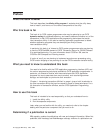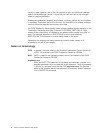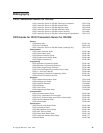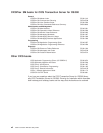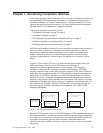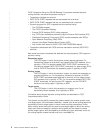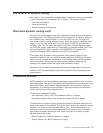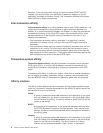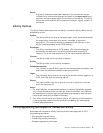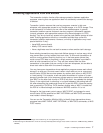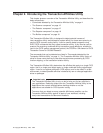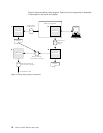
The benefits of dynamic routing
Being able to route transactions to target regions dynamically offers many benefits
in an online transaction processing (OLTP) system. The user can achieve:
v Improved performance
v Improved availability
v Simplified systems management
What does dynamic routing cost?
Of course, the CICS-supplied code cannot determine where to send a transaction,
this depends on your CICS environment and routing policies. It needs a facility for
you to specify your routing policies in a form that CICS can use. This can be a
user-written dynamic routing program used to supply the name of a suitable target
region, or you can use the dynamic routing program EYU9XLOP provided with
CICSPlex SM.. You can define the name of a dynamic routing program on either
the DTRPGM system initialization (SIT) parameter, for terminal-related START and
dynamic program link (DPL) requests, or the DSRTPRG SIT parameter for
non-terminal-related START requests and CICS BTS processes.
At the basic level, a dynamic routing program simply contains tables of user
transaction identifiers, with the matching system identifiers (SYSIDs) of the target
regions that can process the transactions. At the highest and most sophisticated
level, the dynamic routing program would also be capable of detecting and
managing any special factors that might affect transaction routing.
One factor that can affect the otherwise free choice of target region is the use of
particular CICS programming techniques that transactions use to pass data from
one to another.
Transaction affinities
CICS transactions use many different techniques to pass data from one to another.
Some techniques require that the transactions exchanging data must execute in the
same CICS region, and therefore impose restrictions on the dynamic routing of
transactions. If transactions exchange data in ways that impose such restrictions,
there is said to be an affinity between them.
There are two categories of affinity:
v Inter-transaction affinity; see “Inter-transaction affinity” on page 4
v Transaction-system affinity; see “Transaction-system affinity” on page 4
The restrictions on dynamic routing caused by transaction affinities depend on the
duration and scope of the affinities. Clearly, the ideal situation for a dynamic routing
program is for there to be no transaction affinity at all, which means there is no
restriction in the choice of available target regions for dynamic routing. However,
even when transaction affinities do exist, there are limits to the scope of these
affinities determined by the:
v Affinity relations; see “Affinity relations” on page 4
v Affinity lifetime; see “Affinity lifetimes” on page 5
Chapter 1. Introducing transaction affinities 3
|
|
|
|
|
|
|
|
|
|



